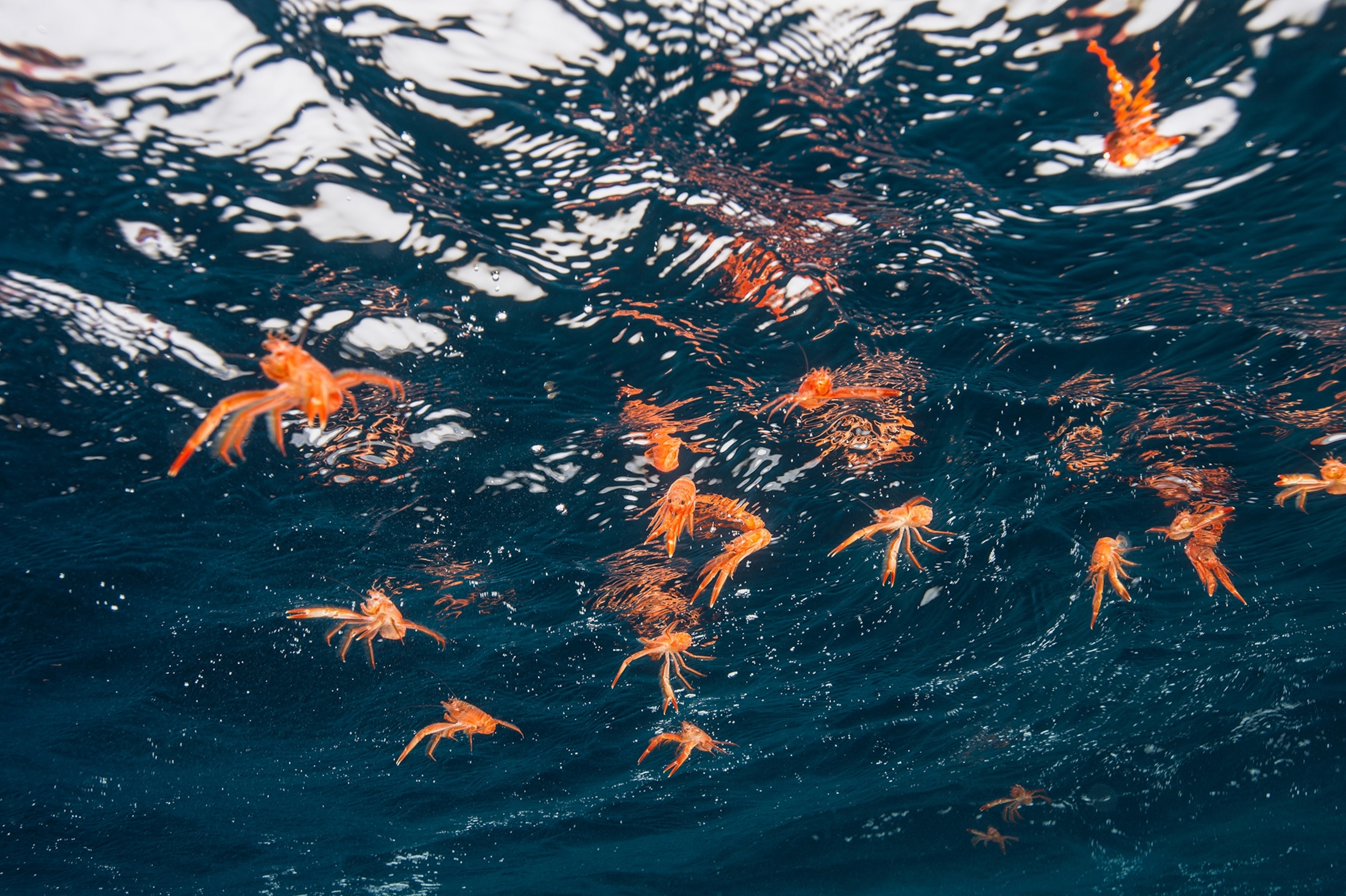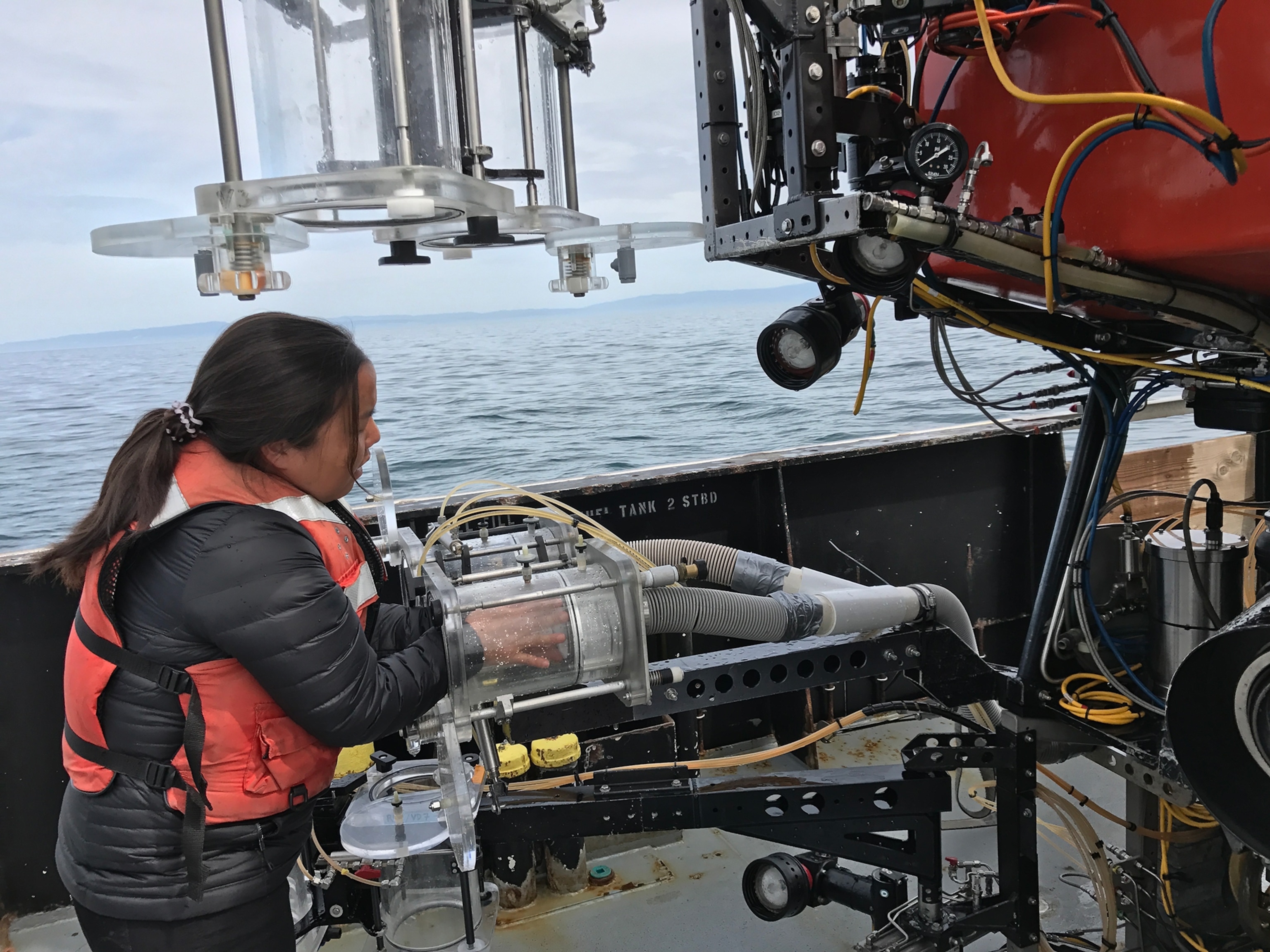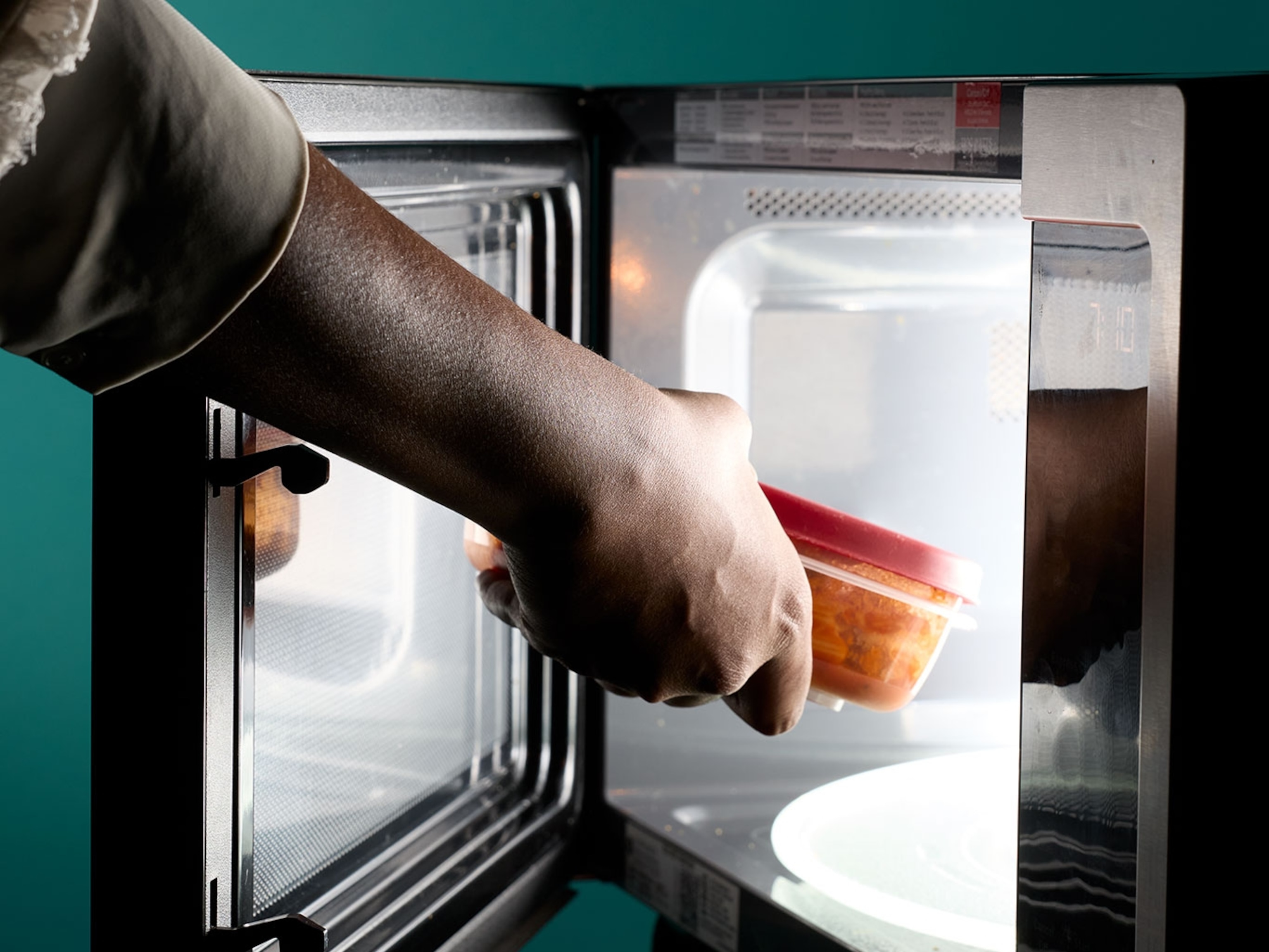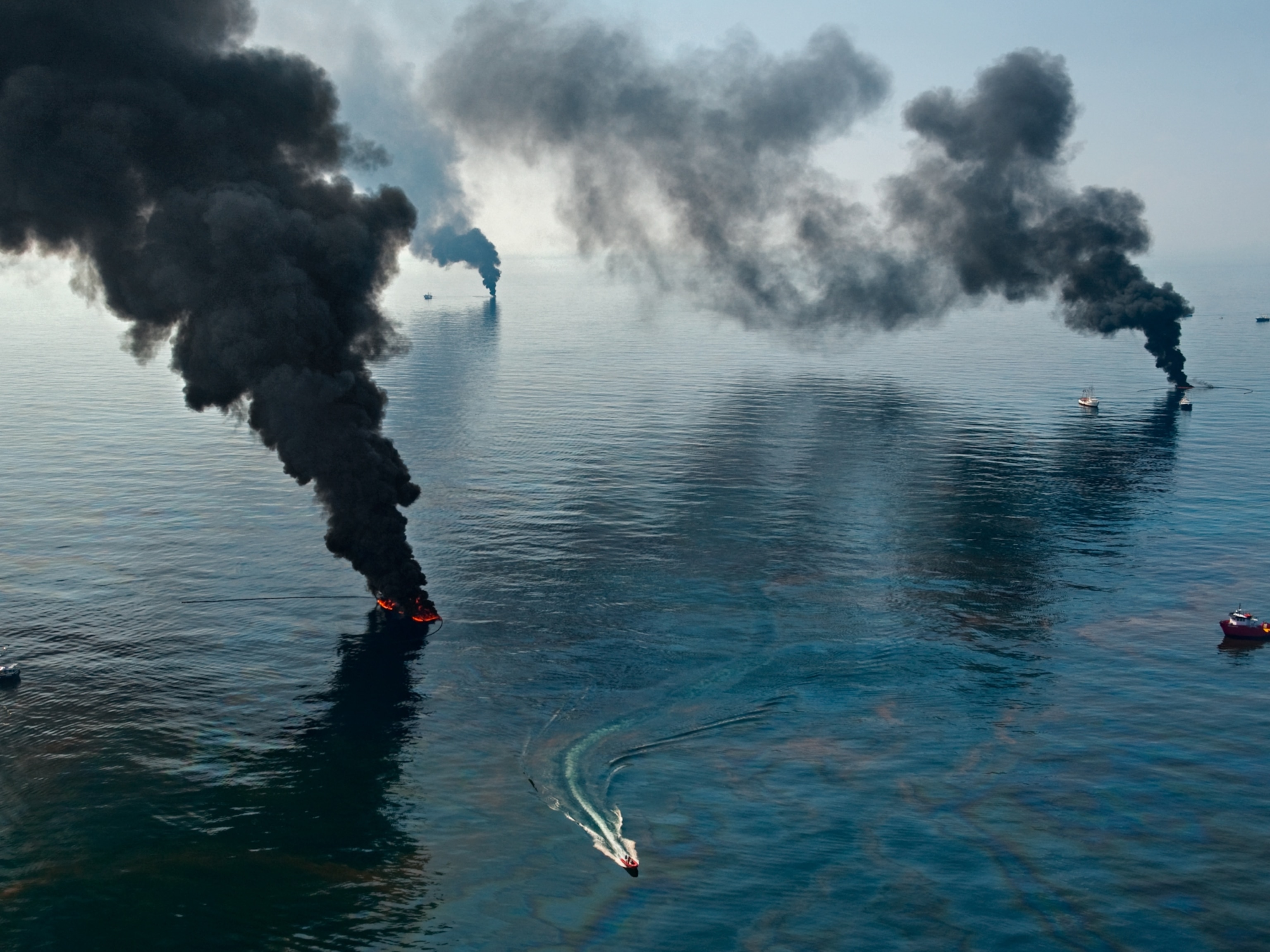Tiny plastic pieces are spread throughout the deep sea
The finding adds to the growing body of evidence that microplastics permeate our oceans.
For many years, scientists have tried to account for the amount of plastic waste that should be in the world’s oceans, given how much is estimated to leak into the seas every year. So far, the tally points to the largest concentrations on the surface and in coastal waters. But much of it remains “missing.”
And scientists can’t fully assess whatever harm plastics cause to the environment until they learn where they are. Now, new research off the California coast suggests an even larger plastics reservoir: deep offshore pelagic waters, the largest habitat on Earth.
Scientists at the Monterey Bay Aquarium Research Institute found high concentrations of microplastics in Monterey Bay, a deep submarine canyon ecosystem that lies in the California Current, which flows southward along the North American coast from British Columbia to Baja.
They conclude, in a study published Thursday in the journal Scientific Reports, that this deep-water repository of small plastic debris “extends much further and more extensively into the waters, sediments, and animal communities of the deep sea.” The research adds to the growing body of work by scientists to locate the “missing” plastic in the oceans.
“We found microplastics everywhere we looked, in every sample and specimen we looked at,” says Anela Choy, an oceanography professor at Scripp’s Institution of Oceanography in San Diego and the paper’s lead author.
The word pelagic is derived from the ancient Greek word for open. The pelagic zone is “open ocean,” which extends over 330 million cubic miles. Although microplastics have been found throughout the oceans, from sea surface to the deepest crevice in the sea floor, efforts to assess the density of microplastics in the pelagic zone are expensive and difficult.
Animals transporting plastic
Choy and her team also found confirming evidence that small filter-feeding ocean animals, including red crabs and tadpole-shaped organisms known as giant larvaceans, transport microplastics throughout the water column, introducing plastic particles into marine food webs from near-surface waters down to the deep seafloor.
The crabs and larvaceans are among some 700 marine organisms that consume microplastics. But both can spread the tiny plastic bits throughout the water column, according to Kakani Katija, a bioengineer at the aquarium and co-author of the study. The crabs, found in large numbers near the surface, are consumed by larger fish, including tuna.
The larvaceans create mucus filters, known as a “house” or a “bubble” that expands the creature to the size of a muffin and collects organic material, including plastics. When the filters become clogged, the larvaceans shed them. As the filters sink to the ocean floor, they are consumed by other marine animals. Larvaceans also transport plastic particles around the deep waters by expelling them in fecal pellets that sink rapidly, carrying the plastic bits with them.
The new findings on marine organisms build on research both scientists published in 2017 that explored how successfully the larvaceans transported microplastics to the deep sea. In that study, they injected small plastic beads into the water around the larvaceans and watched as they ingested them. In the new study, the team did not feed the crabs or larvaceans.
“What we learned with the animals we collected is that they were ingesting plastics in the environment already,” says Katija, who is also a National Geographic Explorer.
In a surprise to the team, the scientists found a strong link between the particles in the water column and those in the red crabs and discarded houses of larvaceans.
“They were similar types and similar sizes,” Choy says.
ROV samples
Choy’s team used underwater remote operated vehicles to collect samples at two locations of depths that ranged from 16 to 3,280 feet below the surface. Samples were collected just offshore, but most were gathered just over 50 miles from shore in the deep waters of Monterey Canyon.
The found concentrations greater than the microplastics that collect in the Great Pacific Garbage Patch, a collection of trash that floats on the ocean surface. Most of the microplastics found in the new study were made of plastics like polyethylene terephthalate (PET), commonly used to make disposable plastic packaging.
Marcus Eriksen is co-founder of 5 Gyres Institute, a nonprofit named for the five main ocean gyres, said the finding is not a surprise. He is one of the authors of a 2015 study that estimated the number of microplastics in the ocean ranged from 15 to 51 trillion pieces, weighing between 93,000 and 236,000 metric tons. He was not involved in the Monterey study.
“it makes sense that there would be concentrations of microplastics in deeper waters,” he said. “What’s unknown is how long microplastics can remain in the water column as they ride deeper currents around the world.
Scientists have known that some plastics have lower and others higher densities than water, meaning that some sink more rapidly while others remain buoyant.
“I would still suspect the majority of plastics are near the surface and the heavier plastics are all sinking soon after flowing out to sea,” says Eriksen.
“Early models of vertical distribution suggested that half of plastics in the ocean were in the first meter and the rest slowly descending vertically, while moving horizontally for thousands of miles. Of course, at the end of the day [end of the century] the majority of the world's plastic waste will reside on the seafloor, being defining material for the Anthropocene.”
The Monterey microplastics were “highly weathered,” suggesting that they had been in the ocean for months or years, Choy’s team concluded. The team found very few of the kinds of plastic used to make fishing gear, further suggesting that the microplastics in the deep water column were transported there by ocean currents.
The team concluded that since plastic waste is predicted to grow for the rest of the century, efforts at mitigation must consider the “enormous spatial (both horizontal and vertical), and ecological scale of the problem these new findings reveal.”
Choy cautioned that deep sea work is needed globally to determine how extensively microplastics saturate deep waters. “It’s an open question. This is one study and a lot of work. But the findings need to be replicated by others in other parts of the ocean to see if they hold it,” she says. “It’s likely there will be a lot of variability due to changes in ecosystems. The more data we have, the better we can understand why.”










